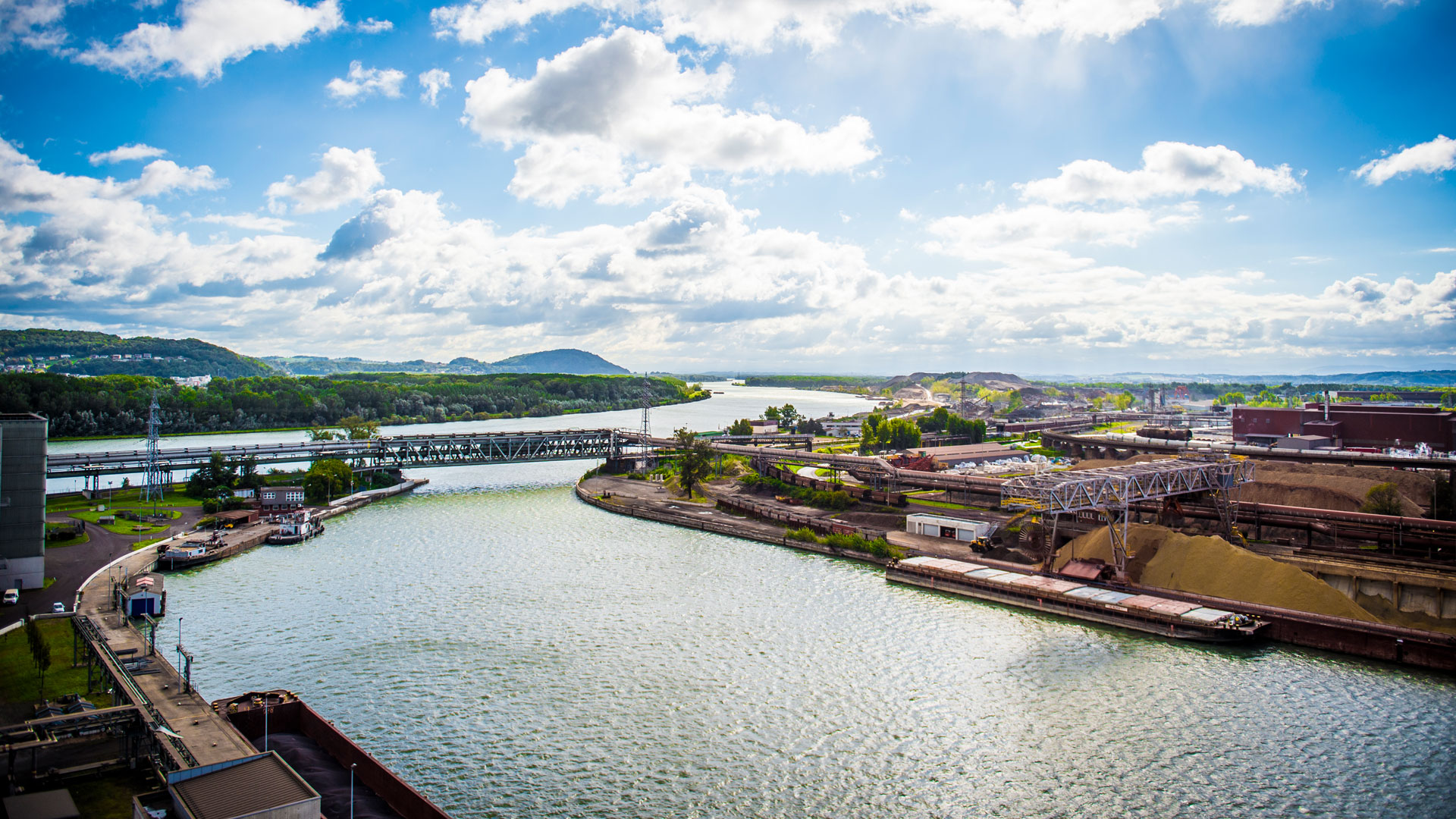A helping hand towards better processes
At HHM – Port of Hamburg Marketing, our Project Department is engaged in European projects that support further development ...

For smooth acquisition of raw materials for its Steel Division and Metal Engineering Division crude steel producers, the group relies on the Port of Hamburg. For manufacturing its high-quality steel products, voestalpine needs such primary raw materials as iron ore and coal. At their Linz base, voestalpine. processes the raw materials in three blast furnaces and a coke oven. Another production site with two additional blast furnaces is located at Donawitz. “Our annual purchases total more than ten million tons of ore, over 2.7 million tons of coal, one million tons of coke and about the same quantity of scrap, along with alloys, fireproof materials, electricity and gas,” explains Peter Sixt, Head of Coal/Coke Purchasing for Linz-based voestalpine Rohstoffbeschaffung – raw material sourcing.
voestalpine secures some of its raw materials from domestic markets and neighbouring countries. Yet this does not suffice to cover the total volumes required. ‘In recent months we have adjusted our purchasing strategy to the geopolitical situation. We are now securing more coal from Australia, Colombia and the USA,” says René Matscheko, CEO of voestalpine Rohstoffbeschaffung – raw material sourcing – , adding that “The current world political situation has shown how rapidly operating conditions can change in the logistics process. When sanctions against Russia came into force, that closed a major market for us and we needed to replace it rapidly. Now we are in process of expanding our raw material procurement still more resiliently.”
The Port of Hamburg plays an important part here. Four years ago, voestalpine decided to import some of its raw materials through Hamburg. “Hamburg is our gateway for raw materials arriving from the North. Here we have discovered a reliable hub on our supply chain,” says Sixt. Last year alone, around 2,9 million tons of iron ore and coal reached voestalpine in Austria via the Port of Hamburg. “voestalpine alone transported 27 percent more via Hamburg. That’s a new record,” stresses Alexander Till, Port of Hamburg Marketing’s Representative in Austria.
Throughput totalled 6.3 million tons, up by no less than twelve percent. At something over 323,000 TEU, containers handled were also slightly up on the previous year, added Till.
“We can be proud to report that in an extremely trying year bedevilled by Corona and Russia’s aggressive war, we achieved records in all areas,” emphasized HHM’s Representative. This involved voestalpine in importing iron ore via the Port of Hamburg. “As a primary raw material, iron ore offers us the basis for a variety of products with tailormade characteristics,” explained Monika Aschenbrenner, responsible for ore and HBI – hot briquetted iron – at voestalpine Rohstoffbeschaffung – raw material sourcing. Yet iron ore does not always mean the same product. It comes in extremely differing qualities. “The criteria for purchasing and processing of iron ore include the iron and slag content of the ore. In addition, there are the classes of pellet to be processed that play an important part in sintering and/or blast furnace exposure. To prevent any mixing of ores that would reduce quality, we transport and store different types of ore separately, says Aschenbrenner. The iron ore transported via Hamburg comes mainly from Canada, Brazil, Sweden and South Africa. It continues its journey to Austria by rail.
For voestalpine, rail is truly the carrier of choice. “For us, rail transport is the ideal solution. In collaborating with DBCargo, we have a reliable partner for our own rail resources,” says Sixt.